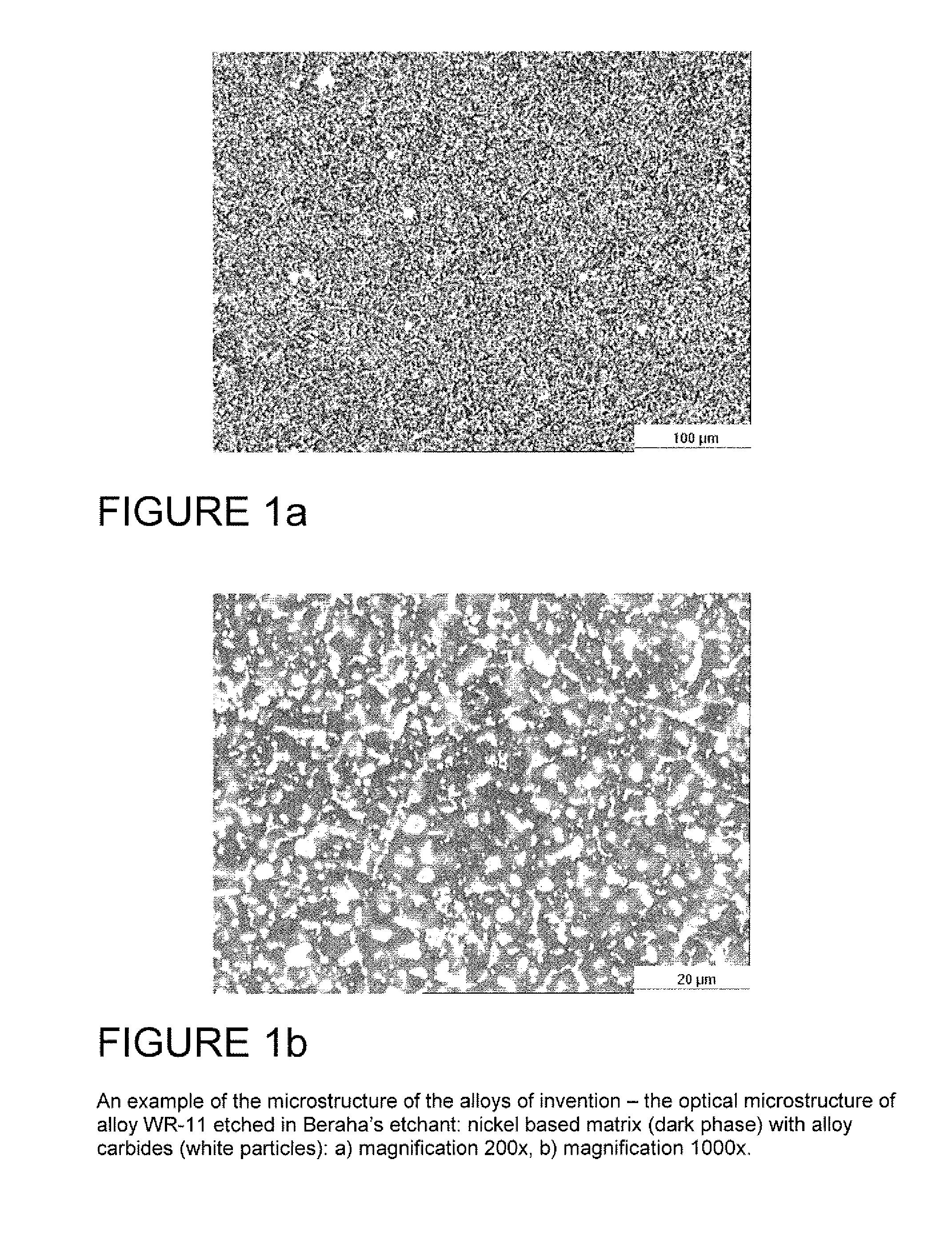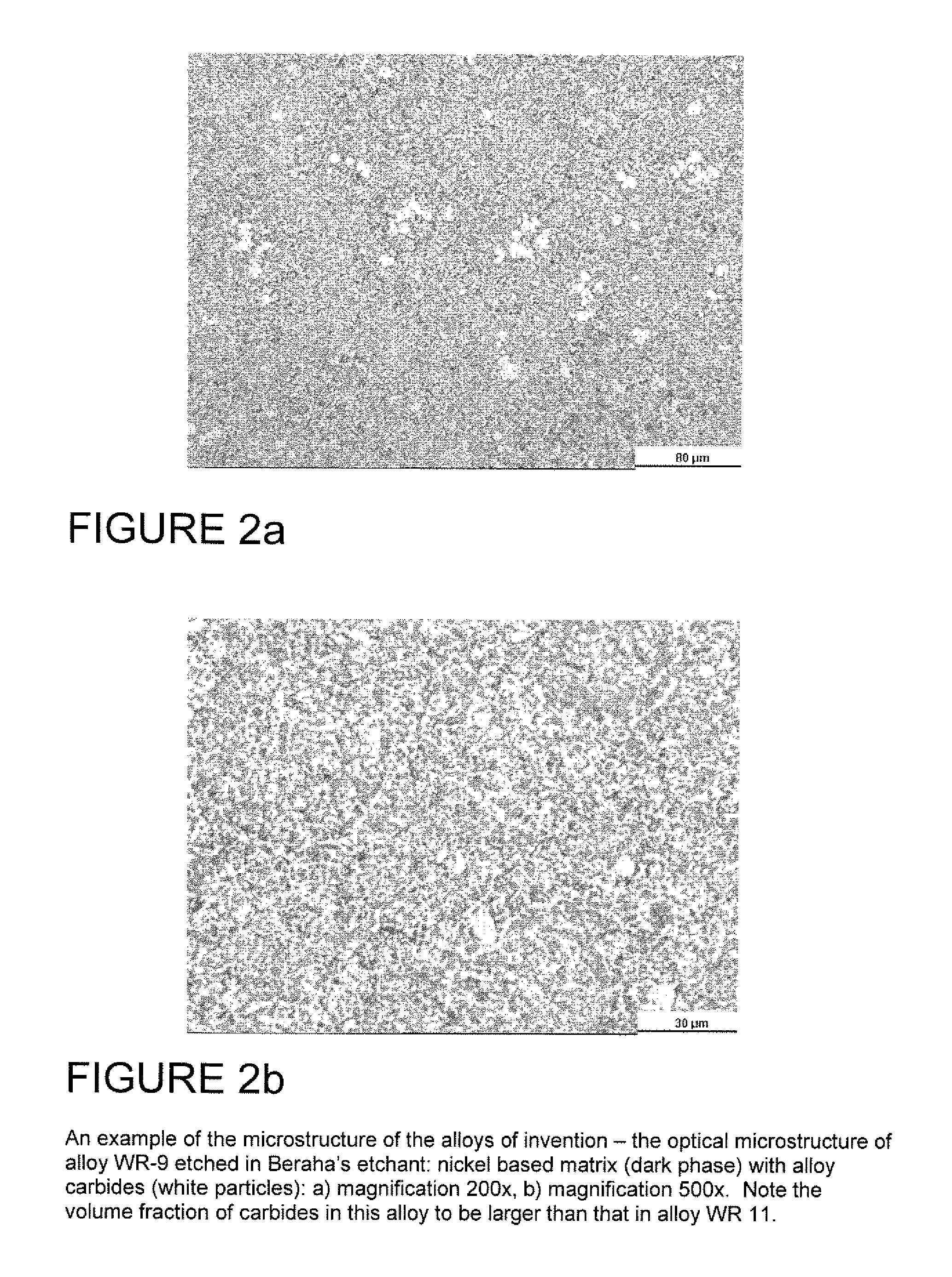Ni-base wear and corrosion resistant alloy
a nickel base alloy and wear resistance technology, applied in the field of nickel base alloy family, can solve the problem of unwound desire for excess carbon dissolved in the matrix, and achieve the effect of improving the wear resistance and increasing the resistance to abrasion of the alloy
- Summary
- Abstract
- Description
- Claims
- Application Information
AI Technical Summary
Benefits of technology
Problems solved by technology
Method used
Image
Examples
Embodiment Construction
[0002]1. Field of the Invention
[0003]This invention relates to a family of nickel base alloys designed for applications in highly corrosive and abrasive environments. More specifically this invention relates to a family of corrosion resistant nickel base alloys which contain a large volume fraction of carbide particles resulting in improved resistance to abrasive wear. These alloys are produced by melting a prescribed composition in an induction furnace and gas atomizing to produce alloy powder particles. Then the produced alloy powder particles are consolidated by a hot isostatic pressing (HIP) process to obtain a solid alloy bar, or the alloy powder can be used for HIP / Clading to produce a wear / corrosion resistant layer on critical surfaces of components which are exposed to abrasive / corrosive environments. The produced powder can also be applied to critical surfaces to produce a wear / corrosion resistant layer using alternative methods, such as various spray deposition methods, pl...
PUM
| Property | Measurement | Unit |
|---|---|---|
| pitting potentials | aaaaa | aaaaa |
| pitting potentials | aaaaa | aaaaa |
| pitting potentials | aaaaa | aaaaa |
Abstract
Description
Claims
Application Information
 Login to View More
Login to View More - R&D
- Intellectual Property
- Life Sciences
- Materials
- Tech Scout
- Unparalleled Data Quality
- Higher Quality Content
- 60% Fewer Hallucinations
Browse by: Latest US Patents, China's latest patents, Technical Efficacy Thesaurus, Application Domain, Technology Topic, Popular Technical Reports.
© 2025 PatSnap. All rights reserved.Legal|Privacy policy|Modern Slavery Act Transparency Statement|Sitemap|About US| Contact US: help@patsnap.com



